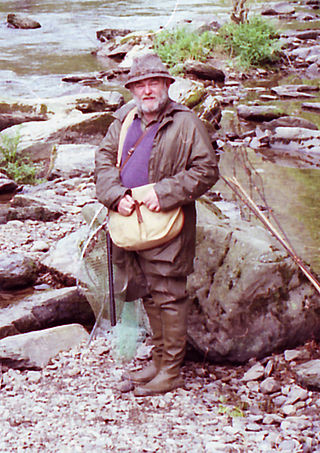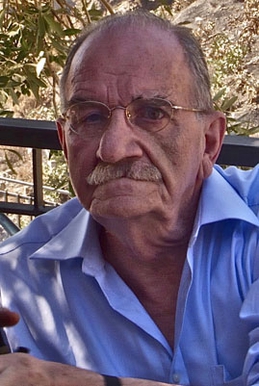
Geotechnical engineering, also known as geotechnics, is the branch of civil engineering concerned with the engineering behavior of earth materials. It uses the principles of soil mechanics and rock mechanics to solve its engineering problems. It also relies on knowledge of geology, hydrology, geophysics, and other related sciences.

Nathan Mortimore Newmark was an American structural engineer and academic, who is widely considered one of the founding fathers of earthquake engineering. He was awarded the National Medal of Science for engineering.
The George E. Brown, Jr. Network for Earthquake Engineering Simulation (NEES) was created by the National Science Foundation (NSF) to improve infrastructure design and construction practices to prevent or minimize damage during an earthquake or tsunami. Its headquarters were at Purdue University in West Lafayette, Indiana as part of cooperative agreement #CMMI-0927178, and it ran from 2009 till 2014. The mission of NEES is to accelerate improvements in seismic design and performance by serving as a collaboratory for discovery and innovation.
Ralph Brazelton Peck was a civil engineer specializing in soil mechanics, the author and co-author of popular soil mechanics and foundation engineering text books, and Professor Emeritus of Civil Engineering at the University of Illinois Urbana-Champaign. In 1948, together with Karl von Terzaghi, Peck published the book Soil Mechanics in Engineering Practice, an influential geotechnical engineering text which continues to be regularly cited and is now in a third edition.

Peter Rolfe Vaughan ACGI, DIC, FREng, FICE, FCGI, MASCE, FGS, was Emeritus Professor of Ground Engineering in the Geotechnics department of Imperial College London.
The Rankine lecture is an annual lecture organised by the British Geotechnical Association named after William John Macquorn Rankine, an early contributor to the theory of soil mechanics.

John Boscawen Burland is a geotechnical engineer, Emeritus Professor and Senior Research Investigator at the Department of Civil and Environmental Engineering of Imperial College London, and a noted expert in the field of soil mechanics.
Sarada Kanta Sarma is a geotechnical engineer, emeritus reader of engineering seismology and senior research investigator at Imperial College London. He has developed a method of seismic slope stability analysis which is named after him, the Sarma method.

The Department of Civil and Environmental Engineering is the academic department at Imperial College London dedicated to civil engineering. It is located at the South Kensington Campus in London, along Imperial College Road. The department is currently a part of the college's Faculty of Engineering, which was formed in 2001 when Imperial College restructured. The department has consistently ranked within the top five on the QS World University Rankings in recent years.
Thomas Denis O’Rourke is an American educator, engineer and serves as the Thomas R. Biggs Professor of civil & environmental engineering at the Cornell University College of Engineering. O’Rourke took his Bachelor of Science in civil engineering at Cornell's engineering college in 1970 and his doctorate at the University of Illinois Urbana-Champaign in 1975.

Andrew Noel Schofield is a British soil mechanics engineer and an emeritus professor of geotechnical engineering at the University of Cambridge.
Rudolph "Silas"Glossop was a British geotechnical engineer and mining engineer notable for his contributions to the field of engineering geology and soil mechanics. He was instrumental in founding Soil Mechanics Ltd. and the establishment of the peer-reviewed journal, Géotechnique. The Glossop Lecture at the Geological Society is named after him.
The Sarma method is a method used primarily to assess the stability of soil slopes under seismic conditions. Using appropriate assumptions the method can also be employed for static slope stability analysis. It was proposed by Sarada K. Sarma in the early 1970s as an improvement over the other conventional methods of analysis which had adopted numerous simplifying assumptions.

Geotechnical centrifuge modeling is a technique for testing physical scale models of geotechnical engineering systems such as natural and man-made slopes and earth retaining structures and building or bridge foundations.

Malcolm David Bolton is a British soil mechanics engineer and professor of geotechnical engineering at the University of Cambridge.

Nicholas Neocles Ambraseys FICE FREng was a Greek engineering seismologist. He was emeritus professor of engineering seismology and senior research fellow at Imperial College London. For many years Ambraseys was considered the leading figure and an authority in earthquake engineering and seismology in Europe.

Dame Sarah Marcella Springman is a British-Swiss triathlete, civil engineer, and academic. She was educated in England and spent much of her career in Switzerland. She is a former rector of the Swiss Federal Institute of Technology in Zurich and currently Principal of St Hilda's College at the University of Oxford.
Dennis Ganendra Malaysian entrepreneur and engineer, is the first chief executive officer of Minconsult Sdn Bhd, a leading multi-disciplinary engineering consultancy. He is a Fellow of the Royal Academy of Engineering, UK.
David Muir Wood is an academic working in the field of geomechanics and soil mechanics, famous for having pioneered advances in mathematical modelling of soils, informed by experimental observation. The hallmark of his modelling efforts has been to formulate elegant models that capture the essence of the material response while being accessible to practitioners of Geotechnical engineering.
Susan Gourvenec is a British geoscientist who is Professor of Offshore Geotechnical Engineering and deputy director of the Southampton Marine and Maritime Institute at the University of Southampton. She was elected a Fellow of the Royal Academy of Engineering in 2022.









